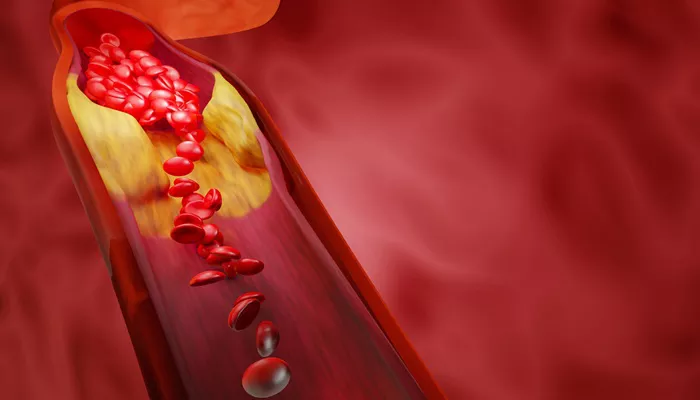Hyperlipidemia is a broad term used to describe elevated levels of lipids, such as cholesterol and triglycerides, in the blood.
It is a significant risk factor for cardiovascular diseases, including heart attack, stroke, and peripheral artery disease. While hyperlipidemia is often categorized into specific types based on lipid profiles, “unspecified hyperlipidemia” is a term that may arise when a detailed classification of the lipid abnormalities is not provided. This article aims to explore the concept of unspecified hyperlipidemia, its implications, potential causes, diagnostic approaches, and management strategies.
What Is Unspecified Hyperlipidemia?
Unspecified hyperlipidemia refers to a condition where lipid abnormalities are detected in the blood, but the exact type or cause of the abnormality is not clearly identified. This term is often used in medical records when lipid levels are outside the normal range, but the specific type of dyslipidemia (e.g., primary hypercholesterolemia, familial hyperlipidemia) cannot be classified without further diagnostic information.
The Basics of Lipid Metabolism
To understand unspecified hyperlipidemia, it is crucial to grasp the basics of lipid metabolism. Lipids, including cholesterol and triglycerides, are vital components of cell membranes and serve as energy sources. They are transported in the blood by lipoproteins, which include:
Low-Density Lipoprotein (LDL): Often referred to as “bad cholesterol,” high levels of LDL can lead to plaque formation in the arteries, increasing the risk of cardiovascular disease.
High-Density Lipoprotein (HDL): Known as “good cholesterol,” HDL helps remove excess cholesterol from the bloodstream and transport it to the liver for excretion.
Very-Low-Density Lipoprotein (VLDL): Contains a high proportion of triglycerides and is involved in transporting these fats from the liver to various tissues.
Chylomicrons: These are responsible for transporting dietary lipids from the intestines to other tissues.
SEE ALSO: How to Diagnose Hyperlipidemia?
Types of Hyperlipidemia
Hyperlipidemia can be categorized into several types based on lipid abnormalities:
Primary Hyperlipidemia: Caused by genetic factors, leading to elevated cholesterol or triglyceride levels.
Secondary Hyperlipidemia: Resulting from other conditions such as diabetes, hypothyroidism, or liver disease.
Mixed Hyperlipidemia: Characterized by elevated levels of both cholesterol and triglycerides.
Causes of Unspecified Hyperlipidemia
Unspecified hyperlipidemia may arise from various underlying causes, including:
Genetic Factors: Some individuals may have genetic predispositions to lipid abnormalities that do not fit neatly into the established categories of hyperlipidemia.
Lifestyle Factors: Diets high in saturated fats, lack of physical activity, and obesity can contribute to elevated lipid levels.
Medical Conditions: Diabetes, thyroid disorders, liver disease, and kidney dysfunction can lead to increased lipid levels.
Medications: Certain medications, such as corticosteroids and some antiretroviral drugs, can affect lipid metabolism.
Diagnostic Approaches
Accurate diagnosis of unspecified hyperlipidemia involves a comprehensive approach:
Medical History: A detailed history of the patient’s lifestyle, family history, and existing medical conditions is essential.
Blood Tests: Lipid profiles, including total cholesterol, LDL, HDL, and triglycerides, are measured. Further tests may include lipoprotein particle size and concentration.
Genetic Testing: In cases where genetic hyperlipidemia is suspected, genetic testing may be conducted to identify specific mutations.
Additional Investigations: In some cases, imaging studies or additional blood tests may be needed to identify secondary causes of hyperlipidemia.
Management And Treatment
Managing unspecified hyperlipidemia involves addressing both the lipid abnormalities and any underlying conditions:
Lifestyle Modifications: Dietary changes, such as reducing saturated fat intake and increasing fiber, along with regular physical activity, are fundamental in managing lipid levels.
Medications: Statins are commonly prescribed to lower LDL cholesterol levels. Other medications, such as fibrates, niacin, or omega-3 fatty acids, may be used depending on the specific lipid abnormalities.
Treatment of Underlying Conditions: Managing conditions such as diabetes or thyroid disorders can help improve lipid levels.
Regular Monitoring: Continuous monitoring of lipid levels and periodic reassessment of the treatment plan are crucial for effective management.
Conclusion
Unspecified hyperlipidemia represents a situation where lipid abnormalities are present but not clearly classified into a specific type. Understanding the underlying causes, appropriate diagnostic approaches, and management strategies is crucial for effective treatment. By addressing lifestyle factors, managing any underlying conditions, and utilizing appropriate medications, individuals with unspecified hyperlipidemia can achieve better health outcomes and reduce their risk of cardiovascular disease. Regular follow-up and a collaborative approach between patients and healthcare providers are essential in managing this condition effectively.

